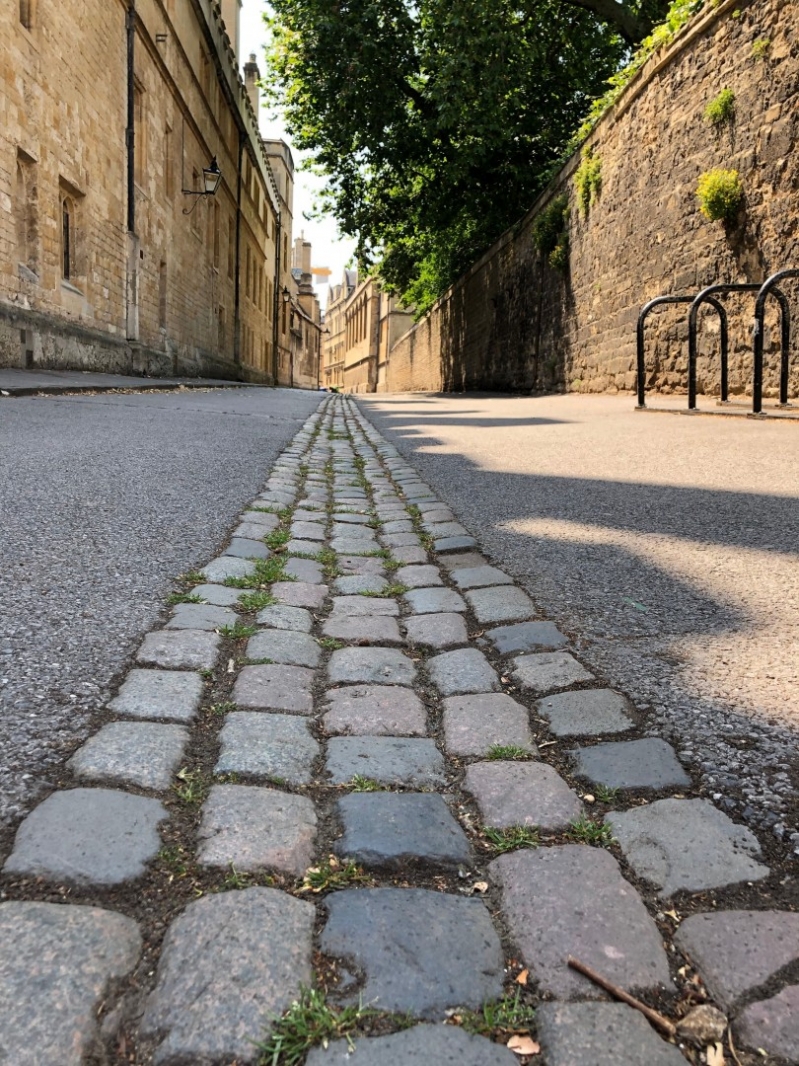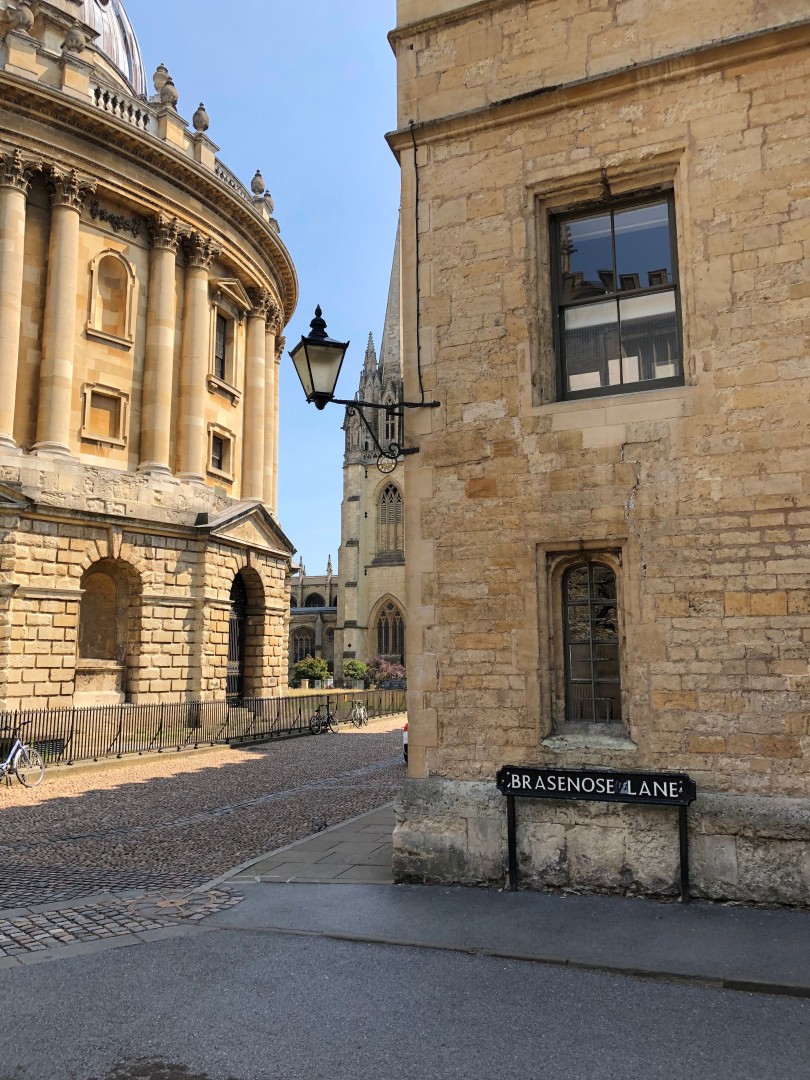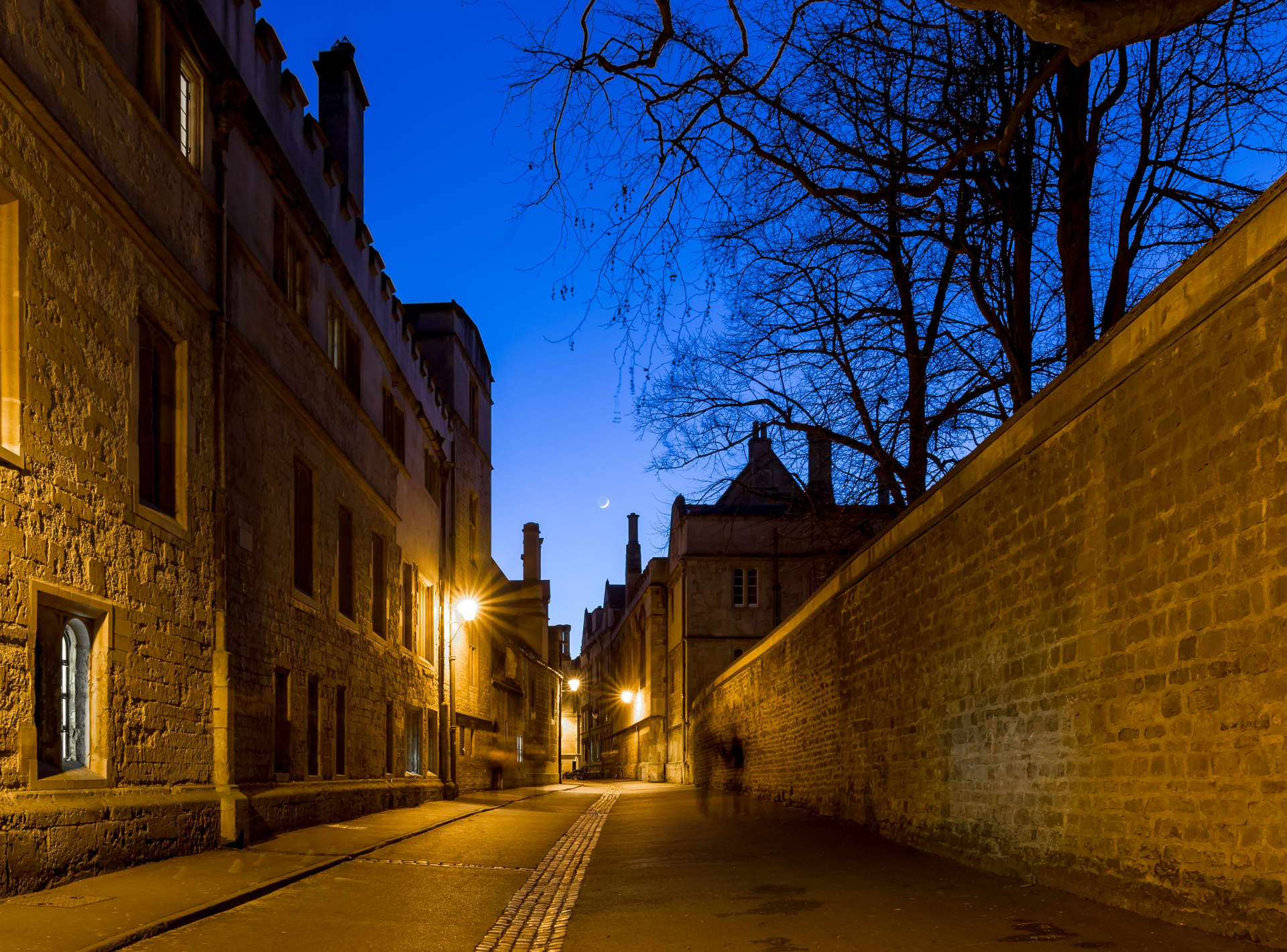The rain in Brasenose Lane still goes – mainly – down the drain. The difference is that this particular cobbled gutter is in the middle of the road rather than cambered to either side.
The technical term for it is a ‘kennel’. Did it get that name, as some claim, because it was a favourite haunt for scrawny medieval dogs scavenging for the bones of discarded meat carcasses? It’s certainly a powerful image – as is that of Dr Johnson as an undergraduate, feet astride the High Street kennel ‘lost in unhygienic thought’. [We salute the late, great Jan Morris for this unforgettable vignette.]
 In earlier times these gutters ran down the middle of every thoroughfare. The endless re-surfacing of Cornmarket exposed a subterranean kennel of considerable depth, filled with the detritus of centuries; and, in Pusey Lane and Walton Lane, cobbled byways parallel to Walton Street, you can still see the vestiges of a long forgotten street-plan, a glorious example of what might have been – like some memory from Pompeii.
In earlier times these gutters ran down the middle of every thoroughfare. The endless re-surfacing of Cornmarket exposed a subterranean kennel of considerable depth, filled with the detritus of centuries; and, in Pusey Lane and Walton Lane, cobbled byways parallel to Walton Street, you can still see the vestiges of a long forgotten street-plan, a glorious example of what might have been – like some memory from Pompeii.
The cobbles of Bath Place, which lead to New College Lane via the Turf Tavern, are also deeply evocative. The cobbles of Merton Street are the most extensive. And those of Bulwarks Lane are perhaps the best of the lot, winding mysteriously around the ancient ramparts of the Norman castle.
The very designation ‘Lane’ (Bear Lane, Magpie Lane, Tidmarsh Lane) speaks of an older age, more rural, cramped, intense, when the swill was communal, and the centre of Oxford was a more intimate place. ‘Loathsome,’ was how John Ruskin described it. In these more sanitised times Brasenose Lane acts as a time-conduit from the medieval to the modern. One minute you are at the cluttered crossroads of the Turl and Market Street, with the high wall of Exeter College pressing you to one side. Next, Radcliffe Camera curves into view, its setting spacious yet intimate, with the towers of All Souls beyond and a high window revealing the lamp-lit profile of a staircase up which no one ever seems to walk...
 A formal report from the University Estates office (2012) – its normally restrained tones tested to their understated limit – describes it thus:
A formal report from the University Estates office (2012) – its normally restrained tones tested to their understated limit – describes it thus:
As one approaches eastwards along Brasenose Lane, the western elevation of the Codrington Library of All Souls College is all that can be seen until one nears the end of the lane. This enclosed location engenders an effect of delayed gratification and discovery for the visitor. Even when one travels specifically to Radcliffe Square, as all tourist groups in Oxford do, the area is something of a concealed surprise, feeling like a secret being discovered. As one moves along any of the approaching lanes, the Camera is slowly revealed, until the entirety of Radcliffe Square is opened up, revealing a wide space characterised by an eclectic mix of distinct yet complementary architecture now united by a consistent limestone palette and dominated by the imposing verticality of the Radcliffe Camera in the centre. The growing revelation of the space adds to the already-significant impact of the architecture.
This is a filmic vision, equally evocative on misty evenings when the moist cobbles glisten under Dickensian lamps, as on a summer’s morning with a sharp light and fresh shade. No wonder Inspectors Morse, Lewis and Thursday are constantly to be seen walking along it. Brasenose Lane is somehow the perfect length for the rising sense of expectation – before you burst upon the glories beyond.
A note from Paul Sullivan’s book on Oxford.
Oxford has several surviving gas lamps, the precursors of electric streetlights. The city’s gaslight system was ignited in 1819, and examples of the old lamps can still be seen throughout the city, notably on the High Street, Radcliffe Square, Brasenose Lane, Merton Street, and many of the adjacent thoroughfares.
Oxford used to be renowned for the quality of its gas. Writing in 1828 Nathanial Whittock enthused:
‘The gas produced here is remarkably pure and brilliant; and by the judicious and liberal arrangement of the laws of the company, the lighting of the city in every part is considered of more importance than the accumulation of profit to the individuals; consequently the elimination of the city, during the winter months, is as brilliant as can be desired.’
I'd like to add a note that the quality of the lighting in Oxford town centre is atmospheric and tasteful (as it is in Cambridge too) not at all the bright white garish health and safety light which pollutes and ruins so many cities in modern Britain.
This article was first published on the Morris Oxford website: morrisoxford.co.uk/morris-oxford/ To enjoy more aspects of Oxford Life and receive a free monthly Story you can subscribe at morrisoxford.co.uk/subscribe/
Images: © Morris Oxford









